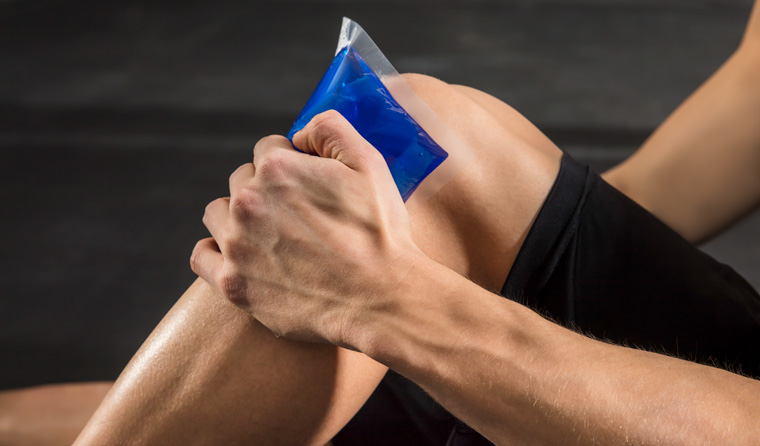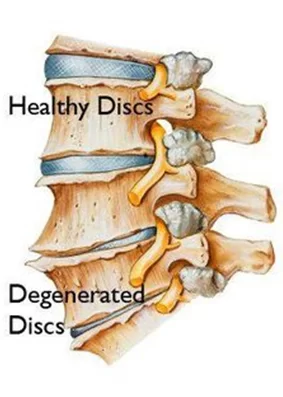16 Best Exercises For Ankle Pain
Table of Contents
Introduction:
Ankle pain can significantly interfere with everyday activities and overall quality of life, and it can be a chronic and severe condition. Whether the pain is from an old injury, misuse, or diseases like arthritis, adding certain workouts to your program may be very helpful in controlling and reducing it.
Ankle pain may be caused by arthritis, sprains, overuse, or limited mobility. Exercises for Ankle Pain improve ankle flexibility and strength, which lessens pain. These workouts are important for improving recovery and preventing injuries.
Pay attention to the level of pain you experience when performing Exercises For Ankle Pain, especially at the beginning. At first, these exercises can worsen your symptoms a bit. They should, however, become easier with time, and frequent exercise may assist in improving ankle mobility. Get advice from a physician or physiotherapist, particularly following an acute injury. Avoid doing things that make your symptoms worse or cause severe pain.
Before beginning any new fitness regimen, always get advice from your doctor or physiotherapist, particularly if you’re in severe pain or have recently suffered an injury. They can provide you with an accurate diagnosis and create a customized treatment plan.
Causes:
There are several possible reasons for ankle pain, which can vary from severe accidents to long-term illnesses. It might be easier to choose the right course of action for relief and therapy if you are aware of these reasons.
Tendinosis or Tendinitis
- Tendon inflammation or degeneration caused by repeated strain.
- Achilles, peroneal, and posterior tibial tendons are common.
Ankle Sprain
- The most typical reason for ankle pain is.
- Ligament damage, usually to the lateral (outside) ligaments.
- Classified as medium to severe (I–III).
- The usual method is to rotate the foot inward.
The condition of osteoarthritis
- Degradation of cartilage due to wear and strain.
- More frequent with aging or following an accident.
Rheumatoid Arthritis
- Inflammation of autoimmune joints can impact both ankles.
Stress fracture
- Little bone fractures are caused by repeated strain.
- A gradual process that gets worse with movement.
Bursitis
- Inflammation of a bursa, a small sac filled with fluid that cushions joints and lessens stiffness between muscles, tendons, and bones. Ankle bursae that have been inflamed by overuse or injury can cause pain, swelling, and warmth.
Tarsal Tunnel Syndrome
- The posterior tibial nerve is compressed.
- Result in numbness, burning pain, and severe pain.
Peripheral Neuropathy
- Illnesses, including diabetes, vitamin deficiencies, or other metabolic issues, can cause nerve injury.
- It could cause weakness, tingling, and intense pain in the ankles and feet.
Flatfoot
- Causes fatigue and soreness in the medial ankle.
Infection
- Redness, edema, and pain are rare but possible adverse effects.
Signs and symptoms:
The following are typical symptoms and signs of ankle pain:
Repeated pain or edema
- Ankle pain has to be evaluated by a doctor if it persists or does not go away with rest and at-home treatment.
Not Able to Support the Weight
- Often seen in situations involving serious fractures or sprains.
- Moreover, it occurs when there is severe pain or inflammation.
Stiffness
- Reduced mobility.
- It usually gets worse in the morning or when you’re sleeping.
Feeling tingling or numb
- It might be an indication of nerve compression, such as tarsal tunnel syndrome.
Instability or Weakness
- The ankle feels like it could “give out.”
- Often due to ligament injury or previous sprains.
A popping or snapping sound
- Heard at the time of the injury.
- The reason might be a fracture, a tendon, or a ligament.
Redness and Warmth
- Applying pressure directly on the damaged ligament, tendon, or bone will frequently cause pain in the ankle.
Benefits of Exercise:
Decreased Inflammation
- Through the promotion of healthy blood flow, targeted exercises, in particular, mild range-of-motion movements, can help in the reduction of ankle joint edema and inflammation.
Range of motion is restored.
- You can reduce ankle stiffness by moving it lightly.
- Encourages flexible joints and good fitness practices.
Reduced Stiffness
- The complete range of motion in the ankle joint can be maintained or restored with the use of mild stretches and mobility exercises, avoiding the stiffness that frequently follows pain, particularly following periods of inactivity or injury.
With Time, Pain Lessens
- Mild stretching and strengthening may help reduce pain by releasing tension in stiff muscles and tendons.
- Putting the joint’s forces back into balance.
Enhances Joint Strength
- Strengthens the ankle’s muscles, ligaments, and tendons.
- Keeps the ankle from giving out, especially when it’s sprained.
- Reduces the possibility of being harmed again.
Avoids Chronic Problems
- Chronic ankle instability and other long-term issues can be avoided with early and regular activity following an injury.
Improved Sports Performance
- Strong and stable ankles are essential for activities demanding rapid direction changes, such as running, jumping, and rotating, which enhances overall performance and lowers the risk of injury for athletes or those participating in social activities.
Before starting an exercise regimen, consider the following:
Before starting any exercise program, a few safety precautions should be taken to get the benefits. Consult your physician or physiotherapist for advice on the best exercises for your specific problem.
Try to pay attention to your body and avoid resisting pain. It’s normal to have pain when exercising, but if it continues or worsens, it could indicate that you’re pushing yourself too much. After you can handle more pain, gradually move on to more difficult exercises. Start with low-impact ones.
Maintaining proper form and technique is crucial to avoiding repeated injuries. Consider medical assistance if you are unclear about how to correctly carry out an exercise program. To better prepare your muscles and joints, warm up before starting any activity.
Exercises For Ankle Pain:
Ankle pump
- Lying down allows you to extend your legs.
- Ensure that your feet are relaxed.
- Next, point your toes directly ahead.
- Toes should be pulled forward towards the shin while the foot remains extended upward.
- As a result, your lower leg’s front muscles ought to get more flexible.
- Hold this position for a few seconds.
- Then return to your neutral position.
- Then relax.
- Repeat these exercises 5 to 10 times.
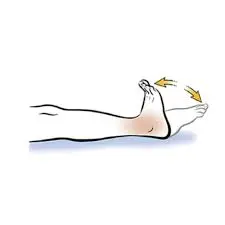
Golf ball roll
- Get into the chair and start sitting.
- A golf ball should then be placed on the ground at your feet.
- Using as much pressure as feels comfortable, place one foot on the ball and move it around.
- After a minute or two, continue with the other foot.
- Then return to your neutral position.
- Then relax.
- Repeat these exercises 5 to 10 times.

Towel curls
- Step one is to sit in the chair.
- After spreading the towel out, step on it.
- Put extra fabric in front of your foot since the towel will be going your way.
- Lift your toes, bend your foot back, while keeping your heel down.
- Keeping your heel on the towel, extend your foot as far out as you can by reaching out equally in the center of your foot and along the edges.
- With your foot arch, pull the towel in towards you while maintaining a straight heel.
- Hold this position for a few seconds.
- You will need to move less the more you pull the towel back and extend it.
- Then return to your neutral position.
- Then relax.
- Repeat these exercises 5 to 10 times.
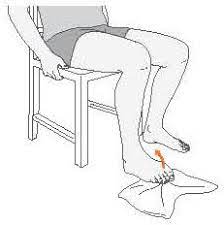
Toe splays
- Begin by standing on the ground.
- Your feet should remain flat on the floor.
- The distance between the toes should be as great as possible without putting any strain on them.
- Hold this position for a few seconds.
- Then return to your neutral position.
- Then relax.
- Repeat these exercises 5 to 10 times.

Standing Heel Raise
- Maintain a shoulder-width distance while standing.
- Transfer your weight to the heel of your foot.
- Next, elevate your heels.
- Hold this position for a few seconds.
- Lower your heel slowly.
- Then return to your neutral position.
- Then relax.
- Repeat these exercises 5 to 10 times.

Seated Plantar Fascia Stretch
- First, take a seat in a chair.
- Next, put one leg across the other knee and set your ankle on top of it.
- Then, grasp your ankle using one hand and your toes with another.
- After that, slowly draw your toes back until the bottom of your foot feels stretched.
- Hold this position for a few seconds.
- Then return to your neutral position.
- Then relax.
- Repeat these exercises 5 to 10 times.

Seated Toe raises
- Begin by settling into the chair.
- Let your hands rest on your lap.
- With the left foot firmly placed on the ground, raise the toes of your right foot.
- Hold this position for a few seconds.
- Drop your toes.
- Then return to your neutral position.
- Then relax.
- Repeat these exercises 5 to 10 times.
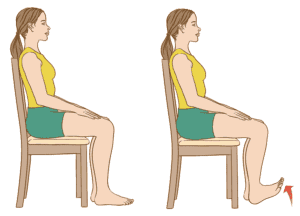
Toes on the Wall Stretch
- Place your toes on the wall and face it.
- The effort increases as you raise your toes.
- During each movement, maintain your heel securely planted on the ground.
- Hold this position for a few seconds.
- Let go of your heel.
- Continue to stand forward.
- Then return to your neutral position.
- Then relax.
- Repeat these exercises 5 to 10 times.

Non-Weight Bearing Dorsiflexion
- Take a seat on the floor to begin.
- Then spread your legs.
- Make your knee straight.
- While only moving your ankle, move your foot back towards your nose.
- Continue until it becomes tight or you are unable to tilt it back any further.
- Hold this position for a few seconds.
- Then return to your neutral position.
- Then relax.
- Repeat these exercises 5 to 10 times.

Alphabet writing
- Grab a comfortable chair.
- Be ready to extend your leg.
- Then, using your big toe, form the alphabet’s letters in the air.
- Take it step by step from point A to point Z.
- Then return to your neutral position.
- Then relax.
- Repeat these exercises 5 to 10 times.
- Repeat with another leg.

Non-Weight Bearing Plantar Flexion
- Take a long sit on the bed to start.
- Make your knee straight.
- Moving only your ankle, point your foot forward.
- Continue until it becomes uncomfortable or you are unable to move it any farther.
- Hold this position for a few seconds.
- Then return to your neutral position.
- Then relax.
- Repeat these exercises 5 to 10 times.

Standing calf stretch
- Start by taking a position on the floor near the wall.
- Position the right leg ahead of the left.
- Touch the wall with both arms.
- Maintaining the front leg bent, straighten the back leg by pressing the left heel onto the floor.
- Hold this position for a few seconds.
- Then return to your neutral position.
- Then relax.
- Repeat these exercises 5 to 10 times.
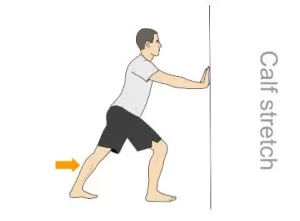
Towel stretch
- Take a seat on the floor to begin.
- Then extend your legs.
- Wrap a towel around each foot’s toes.
- Next, draw the towel in your direction.
- Experience the pressure.
- Hold this position for a few seconds.
- Then return to your neutral position.
- Then relax.
- Repeat these exercises 5 to 10 times.
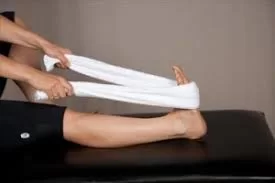
Single-Leg Balance
- To start, stand up straight.
- Raise your foot behind you and bend one leg at the knee.
- Use the other foot to keep your balance as you stand up.
- Hold this position for a few seconds.
- Take the elevated foot down.
- Then return to your neutral position.
- Then relax.
- Repeat these exercises 5 to 10 times.

Foam rolling
- Start by settling into the chair’s seated position.
- Then step your foot onto the foam roller.
- Move the object from your heel to your toes with a little pressure, paying attention to any tight areas.
- Roll beneath your foot with the foam roller, starting at the heel and working your way to the toes.
- For one to two minutes, roll while applying light to moderate pressure.
- Then return to your neutral position.
- Then relax.
- Repeat these exercises 5 to 10 times.

Tip-toe walking
- Choose a level, non-slip surface to stand on.
- Make sure your right foot’s heel hits your left foot’s toes by placing it squarely in front of your left foot.
- Transfer your weight to your front foot carefully.
- To go forward, position your left foot heel to toe in front of your right foot.
- Take ten to fifteen steps in a straight line, then turn around and walk back.
- Use a wall, counter, or other solid object for support if necessary.
- Then return to your neutral position.
- Then relax.
- Repeat these exercises 5 to 10 times.
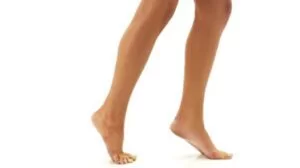
What safety measures need to be taken when working out to relieve ankle pain?
If you have ankle pain, you should start exercising only after consulting a physician or a physiotherapist. Exercises that are suitable and secure, and take into account your particular needs, are important.
Wait until the severe pain or swelling lessens.
- During the first 24 to 72 hours following an acute injury, refrain from performing range-of-motion or weight-bearing exercises.
- R.I.C.E. should be the first step for treating sprains or other serious injuries.
Warm up before you start.
- To increase blood circulation, do a light activity before stretching or strengthening.
- Avoid starting a vigorous workout right away.
Be mindful of balance and control.
- Select an even surface for your balancing activities.
- If you need assistance, grab onto a chair or wall.
Slowly make progress.
- Mild range-of-motion exercises should be followed with stretches, strengthening, and balance exercises.
Slowly and gradually stretch.
- Avoid jumping or overstretching.
- Hold each stretch for a few seconds.
Avoid making painful motions.
- Stop immediately if a workout causes shooting, intense, or rising pain.
- Although mild pain is tolerable, it is a warning indication.
Wear the Right Shoes
- Shoes that are supportive and padded can help reduce strain in the ankle joints.
- Exercises in bare feet should not be performed on hard or uneven surfaces unless directed by a therapist.
At what point did you quit doing this exercise?
A rise in bruising or swelling
- It’s normal to have some oedema, but if it worsens, especially after multiple sessions, that should cause worry.
- Abnormal development, overuse, and inflammation are among potential causes.
A sensation of tingling or numbness
- This could result in nerve involvement or reduced blood flow, both of which need medical attention.
Unable to Carry the Weight
- This could indicate severe inflammation or that the tear has gotten worse.
- Pain gets worse over time rather than getting better.
- Suggests that the existing treatment is not being well-received or that there may be some confusion.
Loss of Stability or Weakness
- To avoid more harm, halt if your ankle hurts, feels weak, or becomes unstable.
- If you have any of these symptoms, stop exercising, put on ice, and see a doctor.
What kinds of workouts should you avoid if you have ankle pain?
It’s essential to avoid exercises that may exacerbate your ankle pain or prolong its healing time. The reason for and intensity of your pain will help determine which exact workouts you should avoid; however, the following basic rules might help:
Activities with a High Impact
Your ankle joint and surrounding structures are under a lot of stress from these activities. They should typically be avoided first, particularly during the acute stage of pain or damage.
- The repetitive impact of running and jogging could worsen inflammation and stress out the tissues that are recovering.
- Basketball, soccer, tennis, football, and other sports involving rapid starts, stops, and direction changes can cause re-injury or worsen existing pain because of their dynamic motions.
- Ankle strain can result from a variety of dancing styles that require jumping or fast turns.
- The explosive power involved in jumping (such as in jumping jacks, box jumps, and skipping) can be harmful to an injured ankle.
Activities That Put Ankle Stability at Risk
Avoid workouts that uncontrollably test the stability of your ankle if it seems unstable, especially in the early stages of recovery.
- Running or walking on rough surfaces increases your chance of experiencing frequent ankle twists or rotations. Remain on flat, stable surfaces.
Particular Yoga or Pilates Exercises
Certain yoga and pilates poses and motions, particularly those that require plantarflexion (toes pointed) or dorsiflexion (toes bent upward), can strain the ankle.
- Warrior poses
- Chair pose
- Downward dog
Excessive Weight-Bearing Activities (at first)
Although strengthening is essential, full weight-bearing workouts may be too much to handle in the early stages of ankle pain.
- Lunges or deep squats that put a lot of strain on the ankle without enough control.
- If the Achilles tendon is the cause of pain, avoid doing heavy calf raises.
Changes in Lifestyle to Lessen Ankle Pain:
Although pain can greatly interfere with day-to-day activities, several lifestyle adjustments can help reduce pain and encourage recovery.
These lifestyle changes are intended to support long-term ankle health, lessen ankle stress, and improve joint function.
- Put on footwear that offers sufficient stability, cushioning, and arch support. To avoid pressure, choose models with a large toe box that let your toes rest naturally.
- Avoid wearing flip-flops, high heels, unsupportive flats, and worn-out shoes since they might make ankle pain worse and offer little support.
- Before engaging in any physical activity, always warm up and thereafter, cool down with stretches to prepare your muscles and avoid injury.
- Stretching your feet and ankles every day can increase flexibility, lessen stiffness, and stop pain in the future. Exercises for strengthening increase stability and lessen pain, strengthening the muscles surrounding your ankle.
- Pay attention to your body’s signals and refrain from “playing through the pain.” Reduce the intensity of an activity or take a break if it becomes more painful.
- Carrying too much weight increases the risk of pain and damage by placing extra strain on your ankles and other weight-bearing joints. You may greatly lessen the strain on your ankles by losing even a tiny amount of weight.
You may increase your mobility, manage and reduce ankle pain, and improve your general well-being by adopting these lifestyle modifications.
Summary:
If done regularly and carefully, ankle exercises may help with pain relief, function restoration, and preventing further problems. Be mindful of your body, begin gradually, and remain dedicated to your recovery.
For best results, combine these exercises with a healthy lifestyle and, if needed, professional counsel. Ankle pain can be lessened by adopting an ankle-friendly lifestyle rather than by employing specific treatments. Every minor change, from your footwear to your diet and regular exercise regimen, contributes to long-lasting prevention and relief.
For more advice on how to increase the strength and flexibility of your ankles, consult your physician or a physiotherapist. If you’re doing these techniques correctly, a qualified expert can inform you. Form is important.
When stretching, you should also pay attention to any pain you experience. Even though you might occasionally feel sore, you should talk to your doctor about any serious pain.
FAQ:
What would happen if ankle pain were ignored?
Continuing to utilize your ankle without providing it with the rest and care it needs may result in a much longer length of pain and inflammation than would be possible with therapy. For months, this could make it difficult to do daily activities like walking, driving (if it’s your right ankle), and working.
How can someone who has ankle pain walk?
Consider reducing back on the amount of time or distance you walk if you have ankle pain, then gradually increase it back up to your desired level. Walking increases the strength of your muscles and tendons, but occasionally walking too much too soon strains those systems.
How come my ankles hurt at night?
Numerous factors, including activity levels throughout the day, immobility when sleeping, and underlying medical issues like arthritis or nerve damage, might contribute to nighttime ankle pain. The pain may also be made worse by decreased blood flow and fluid buildup in the lower limbs during rest.
Which workout is most effective for treating ankle pain?
The greatest workouts for ankle pain concentrate on increasing range of motion, strength, and flexibility. Towel stretches, Achilles stretches, and ankle circles are useful for easing stiffness and soreness. Towel pickups, writing the alphabet on your toes, and heel lifts are exercises that improve strength and stability.
How can I sleep without getting ankle pain?
No matter which joint is hurting, you should always attempt to avoid sleeping on your stomach. This posture overstresses your ankles, knees, hips, and shoulders. The ideal sleeping position for ankle pain is on your back.
What causes morning ankle pain?
Inflammation and stiffness that build up overnight, especially after periods of inactivity, are frequently the cause of morning ankle pain. Numerous diseases, including tendinitis, osteoarthritis, rheumatoid arthritis, and previous harm like sprains or fractures, can cause this.
When is the best time to perform ankle strengthening exercises?
Within 48 to 72 hours following a sprain, you should typically begin performing range-of-motion and strengthening activities. Consult your physician or physiotherapist before beginning.
Which is more effective for ankle pain?
Ankle pain is often relieved by cooling, relaxation, and prescription pain relievers. Injuries and arthritis will be treated by a medical professional. These disorders can often be treated without surgery. It may be necessary to have surgery for severe ankle injuries, including shattered bones.
Does walking have the potential to reduce ankle pain?
Increasing your ankle joint’s strength and mobility is the greatest strategy to relieve ankle pain that occurs as you walk. “The best methods to achieve that are walking and performing specific ankle strengthening and stretching exercises.”
What advantages does ankle strength offer?
By strengthening your ankles, you can improve your balance and lower your risk of slipping and falling. Strong ankles can improve your performance by giving you a solid basis for motions like jumping, cutting, and rotating, whether you’re an athlete or just play sports for fun.
What are the advantages of having strong ankles?
By strengthening your ankles, you may increase your balance and reduce your chance of falling. Whether you’re an athlete or just like playing sports for happiness, having stronger ankles can help you perform better since they provide a solid basis for movements like jumping, cutting, and twisting.
Can workouts stop ankle injuries or pain in the future?
Ankle pain and injuries, especially sprains, can be avoided with regular ankle workouts, especially those that focus on strength and balance. You can better support your ankle joint and respond to uneven surfaces or sudden shifts by strengthening your muscles and increasing your sense of balance, or awareness of your body’s location in space.
When there is no injury, what causes ankle pain?
However, ankle pain can happen even if there isn’t an injury. Achilles tendonitis, osteoarthritis, rheumatoid arthritis, and abnormal arches are the most prevalent ankle conditions.
References:
- July 8, 2025; Bariya, D. Physical therapy’s Top 20 Ankle Pain Exercises. Physical therapy, exercise, and treatment. Physical therapy exercises for ankle pain: https://physical-therapy.us/
- The Top 5 Exercises for Persistent Ankle Pain by Surrey Physio, n.d.-d. The Surrey Physio. The following are the top 5 exercises for persistent ankle pain: The top five exercises that are recommended by Surrey Physio.
- Five Foot-exercises.html Exercises to Reduce Ankle Pain | Fort Worth Bone & Joint Clinic, n.d. Here are some educational resources: https://thcboneandjoint.com
- Workouts for the ankles, feet, and toes. (n.d). Versus Arthritis. https://versusarthritis.org/about-arthritis/exercising-with-arthritis/healthy-joint-exercises/toe, foot, and ankle exercises for people with arthritis
- Marcin, A. July 13, 2017b. Try these eight ankle stretches at home. Healthline. Ankle stretches: https://www.healthline.com/health/fitness-exercise.
- L., DO. Inverarity (2024b, May 18). Ankle strengthening exercises. Very well, Medical. Ankle exercises: a comprehensive guide (https://www.verywellhealth.com/) 2696480
- Image 2, Planus Pes. (n.d.). The myofascial release ball. https://www.pesplanus.lt/en/orthopedic-massage-balls/4261-myofascial-release-ball an
- Image 6, OrthoIdy. May 28, 2015. Plantar fascia stretch while seated [Video]. YouTube. Watch this: https://www.youtube.com/watch?v=l5zCe0AdQk.
- Image 8, A. Tucker and C. S. CPT (2023, Nov 2). You may relax your lower limbs by performing these eleven essential calf stretches. The self. This link will take you to a gallery of essential calf stretches.
- Image 14, Kuhn, Alyssa, Arthritis Adventure. May 7, 2024. These 11 essential balancing exercises can help you become less unsteady [Video]. YouTube. Watch this: https://www.youtube.com/watch?v=_8NW1emA2Rg




